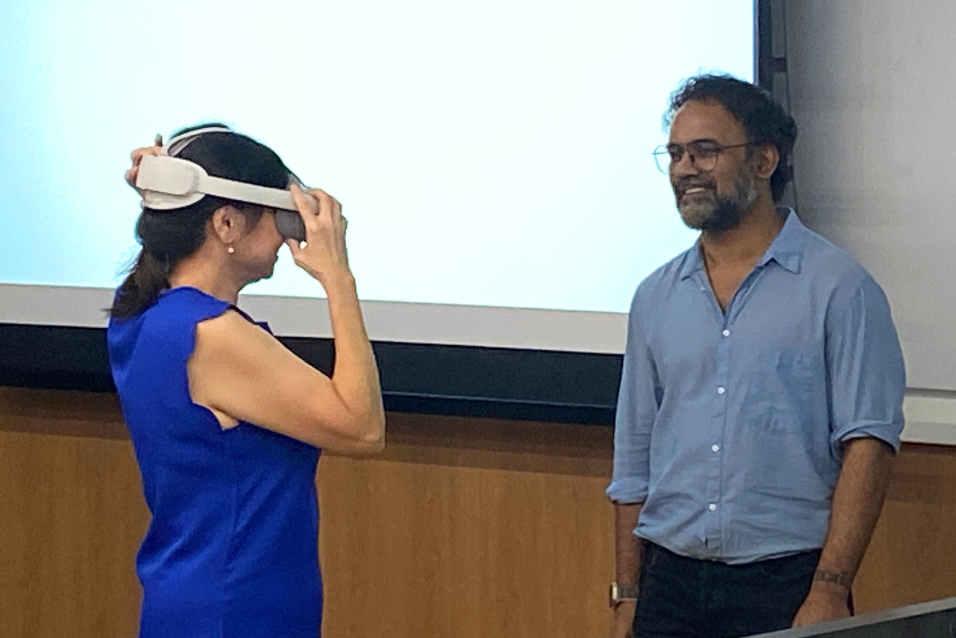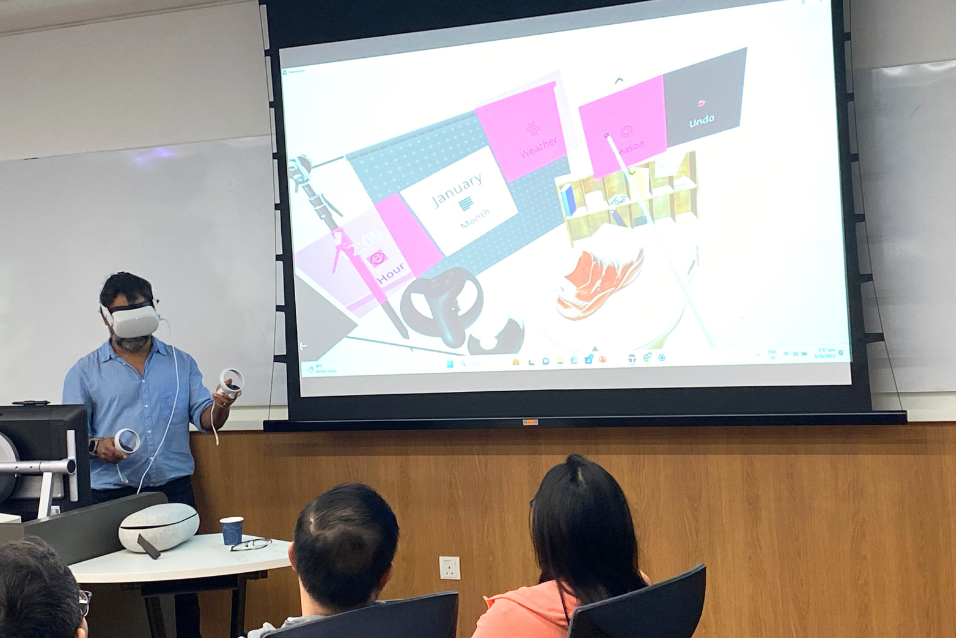Over 30 people from various backgrounds, including engineers, analysts and librarians, attended a workshop on gamification and 3D technology on October 3rd. The session, “Mastering Gamification and Use of Immersive 3D Technology”, provided participants valuable insights into the changing landscape of game technology and gamification methods. The session was conducted by Rahul Nath, an Instructor in NUS Advanced Computing for Executives (ACE) and creative director at LAI Games.
“My key message for today was really a sneak peek into emerging technology and how it is tied to product development,” said Mr Nath, who is also the founder of PrevizAsia. “It is my belief that everyone who comes into these kinds of workshops wants to create something.”
Mr Nath said that there is a gap between understanding emerging technologies and being able to create quality products with them and stressed the importance of bridging this divide. “There’s a very big gap. The smaller we can make that gap for them, to understand and to know of risk analysis and which technology might be ahead of its time, the more successful we can get,” he said.
Among the participants was Product Manager Tan Weiqi who attended to learn about VR, AR and gamification. She found the demos, real-life use cases and case studies especially helpful. “I think it’s very useful to visualise all these for someone who’s relatively new,” she said, adding that she might incorporate gamification in her work.
Engineer Tan Chyun Yih also attended the workshop, eager to learn about integrating the latest technologies into his projects. He found the session informative and inspiring, motivating him to delve deeper into these subjects.
Another participant who found the session informative was Nathaniel Zacharias who used to work in engineering in the semiconductor sector. “I’m here to get exposure on the latest developments in gamification and 3D development. I’ve learned about the principles behind gamification, how it should be used and how it shouldn’t be used in engaging users,” he said.



